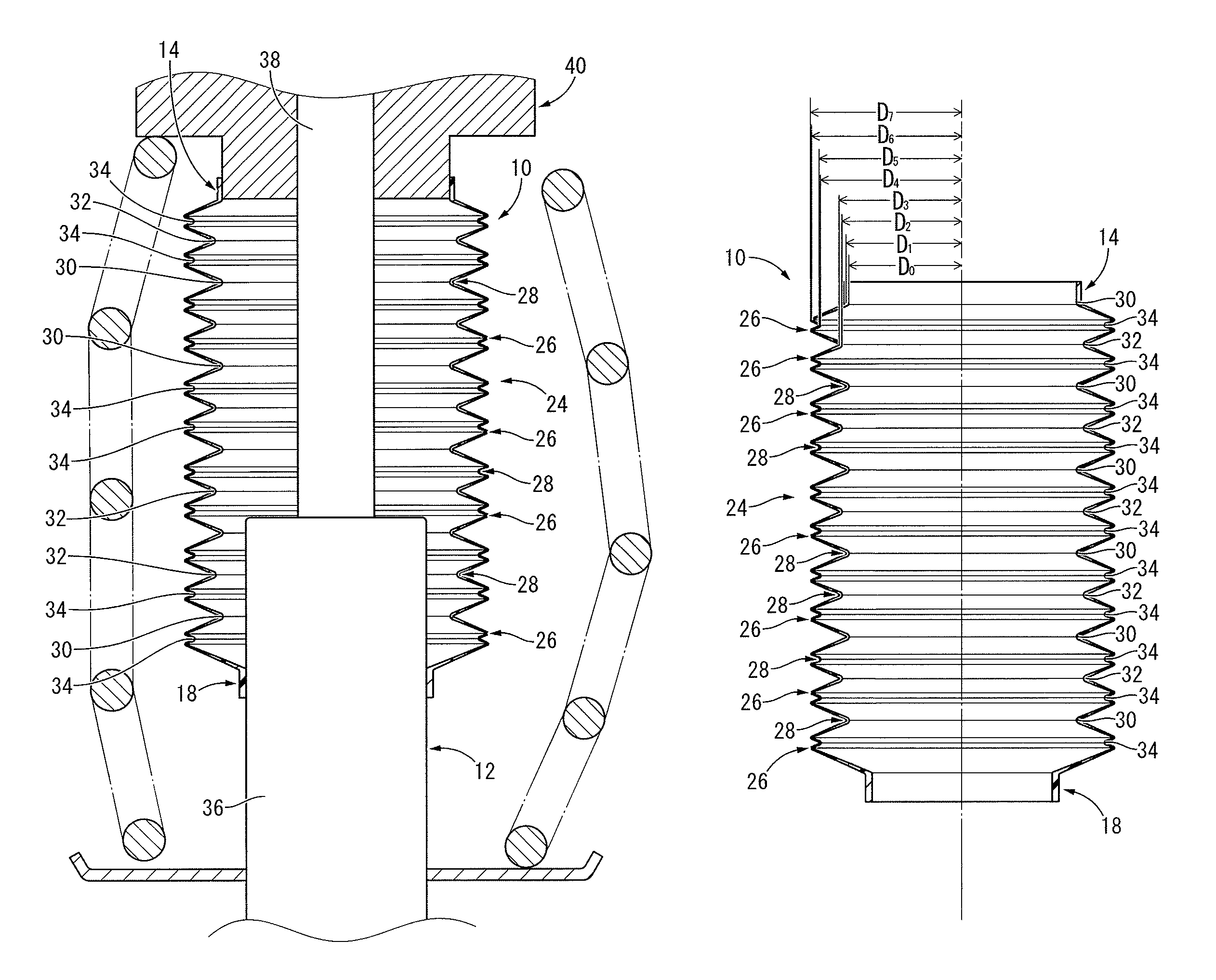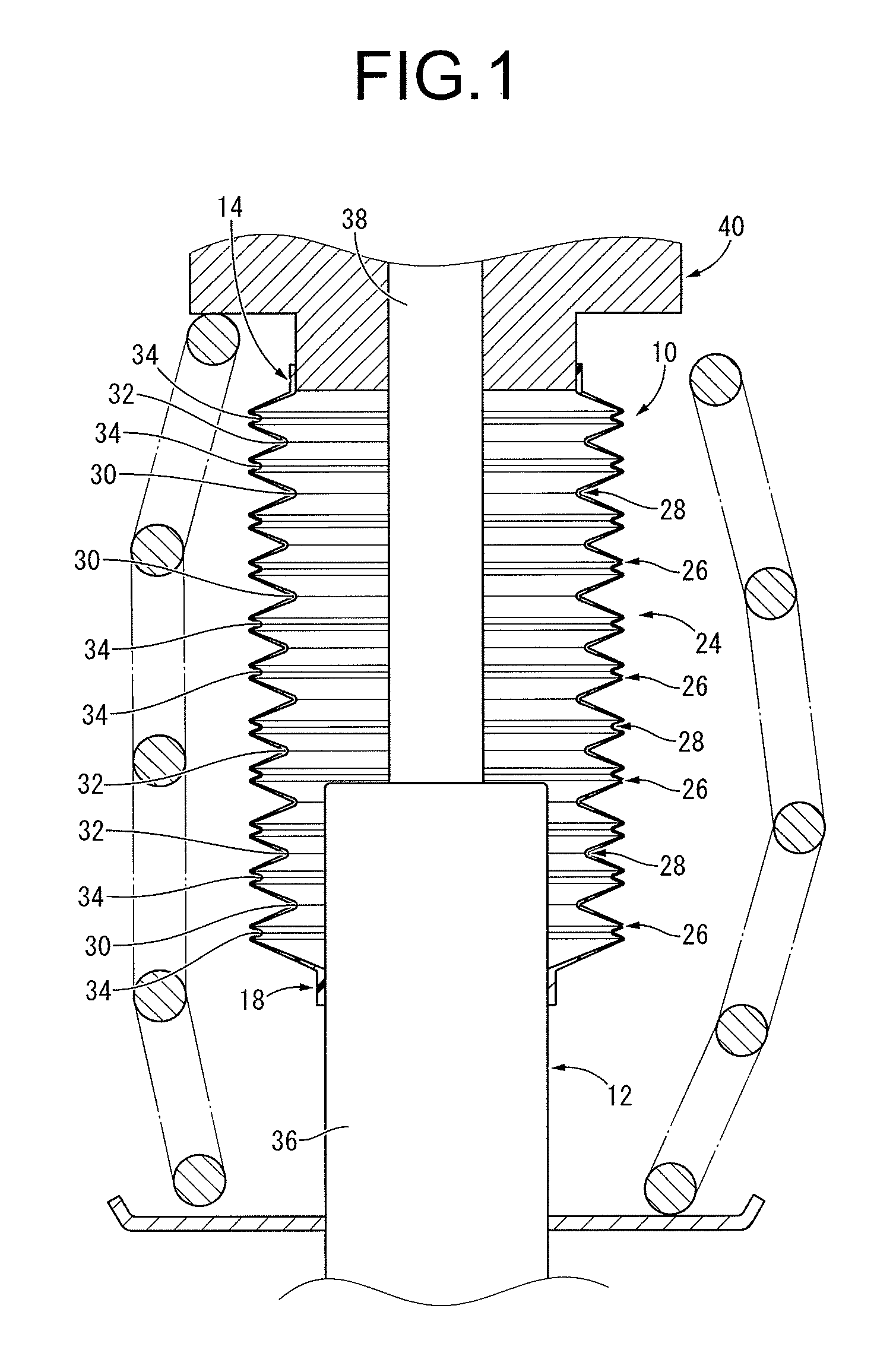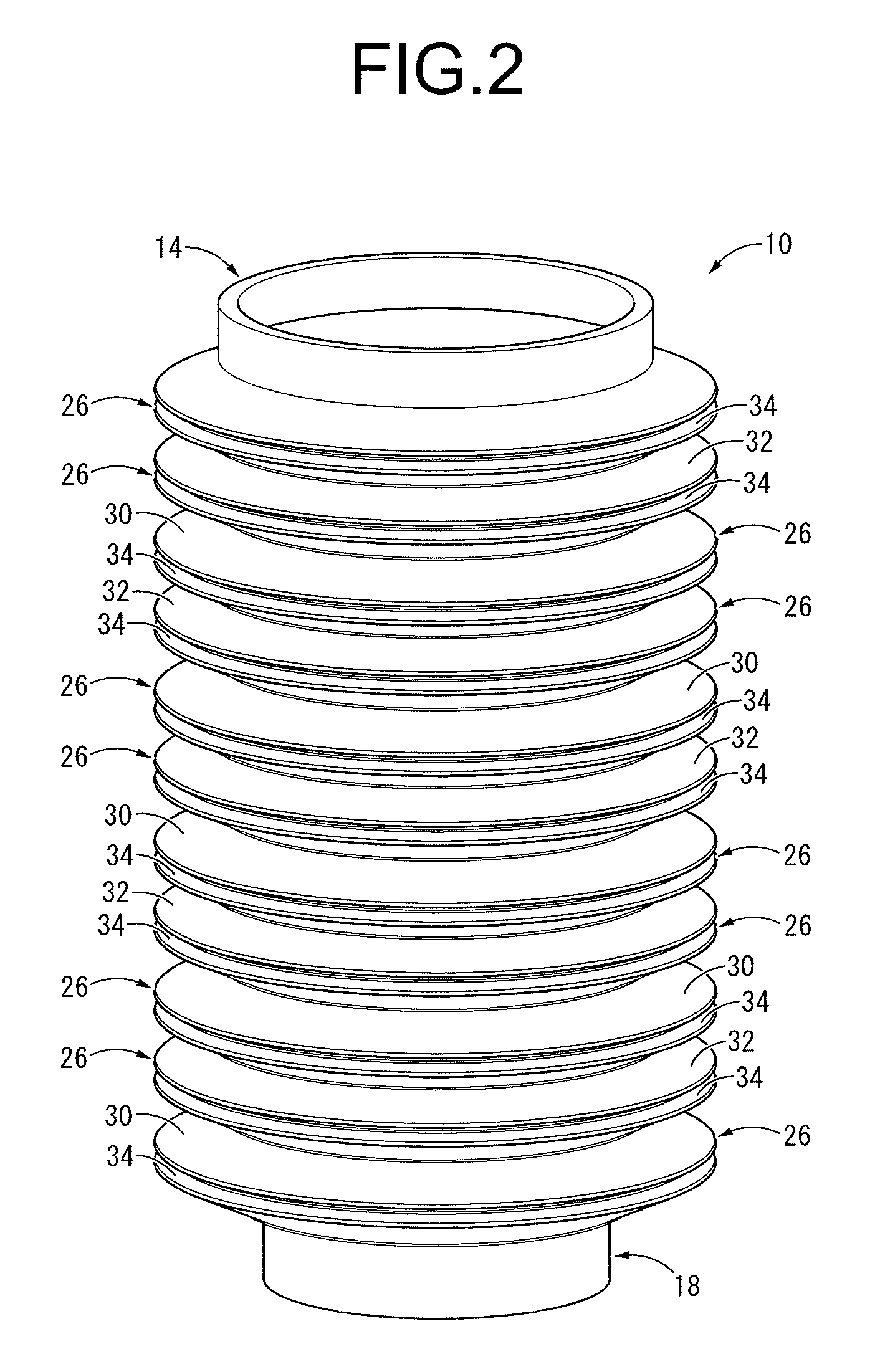Protective cover and manufacturing method thereof
a protective cover and manufacturing method technology, applied in the field of protective covers, can solve the problems of insufficient axial dimension during extension, difficult to ensure sufficient elasticity, and insufficient extension/contraction stroke, etc., and achieve the effect of minimizing axial dimension, sufficient axial dimension, and obtaining the bellows portion
- Summary
- Abstract
- Description
- Claims
- Application Information
AI Technical Summary
Benefits of technology
Problems solved by technology
Method used
Image
Examples
Embodiment Construction
[0032]An embodiment of the present invention will be described below in reference to the drawings.
[0033]Referring to FIG. 1, there is depicted a dust cover 10 as a first embodiment of the protective cover constructed according to the present invention, in a state of being mounted onto a shock absorber 12 of a suspension mechanism. In the description hereinbelow, as a general rule the vertical direction refers to the vertical direction in FIG. 1, which is also the axial direction of the dust cover 10.
[0034]Described more specifically, as depicted in FIGS. 2 through 5, the dust cover 10 has a thin-walled, generally round tubular shape overall, and is endowed with elasticity by being made of a rubber elastic body, synthetic resin, or the like. While no particular limitation is imposed as to the rubber elastic body or synthetic resin that forms the dust cover 10, in the present embodiment, for example, a material made from polypropylene (PP) serving as a thermoplastic resin mixed with e...
PUM
| Property | Measurement | Unit |
|---|---|---|
| diameter | aaaaa | aaaaa |
| thickness dimension | aaaaa | aaaaa |
| thermoplastic | aaaaa | aaaaa |
Abstract
Description
Claims
Application Information
 Login to View More
Login to View More - R&D
- Intellectual Property
- Life Sciences
- Materials
- Tech Scout
- Unparalleled Data Quality
- Higher Quality Content
- 60% Fewer Hallucinations
Browse by: Latest US Patents, China's latest patents, Technical Efficacy Thesaurus, Application Domain, Technology Topic, Popular Technical Reports.
© 2025 PatSnap. All rights reserved.Legal|Privacy policy|Modern Slavery Act Transparency Statement|Sitemap|About US| Contact US: help@patsnap.com



